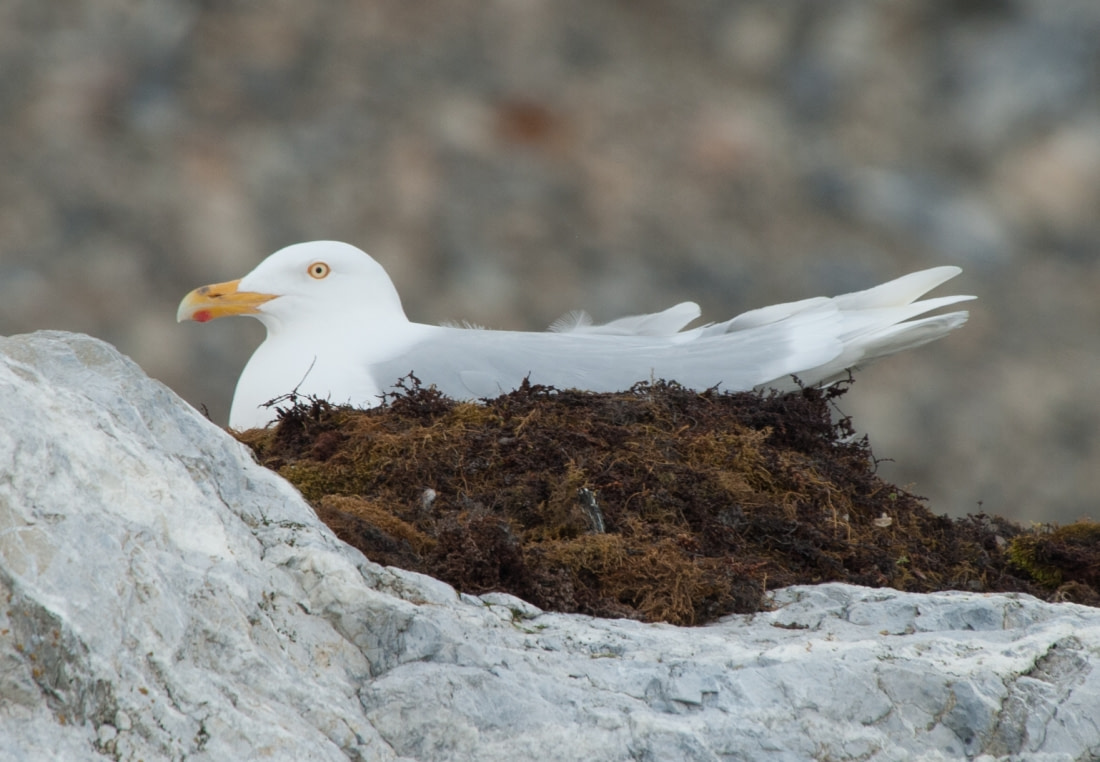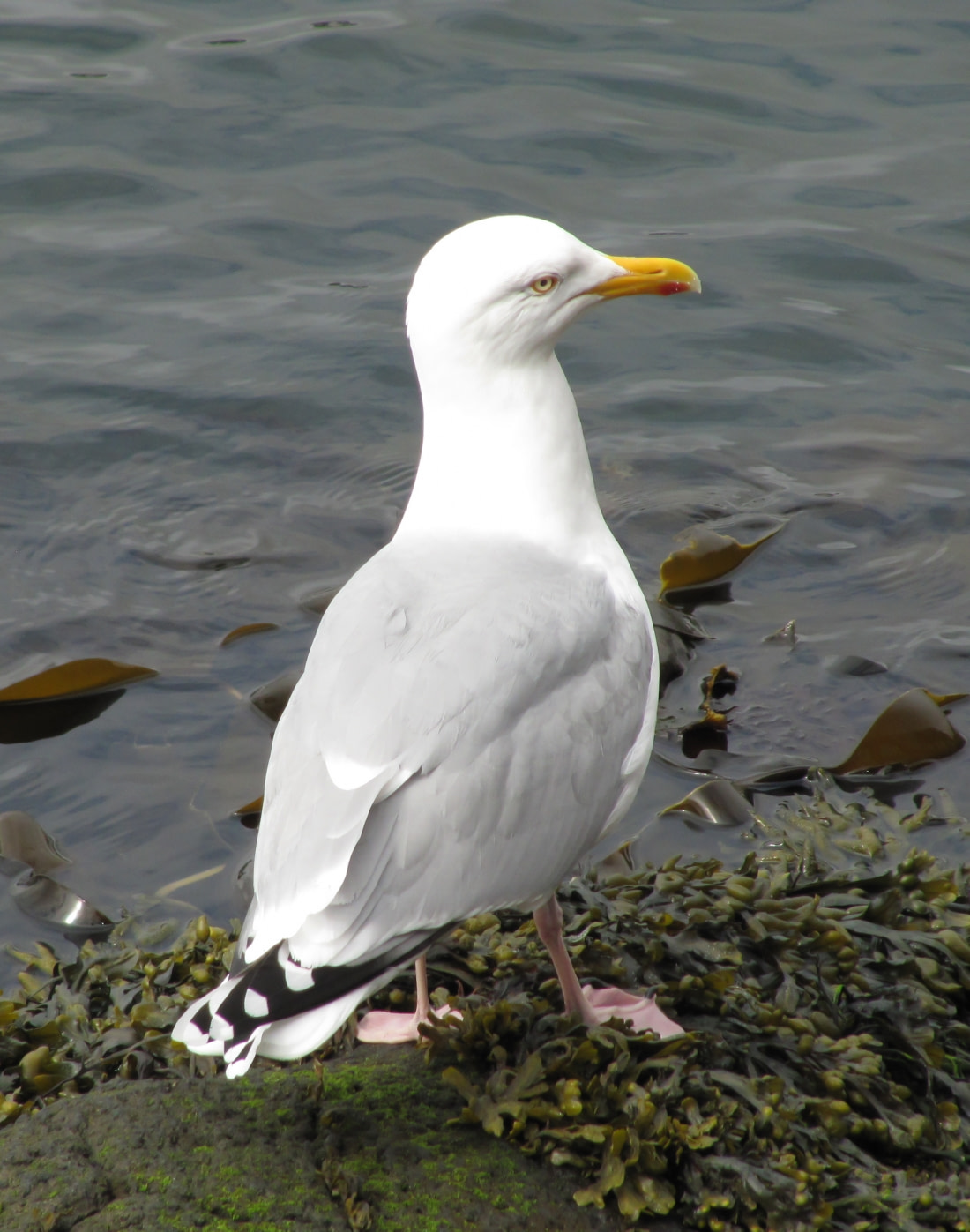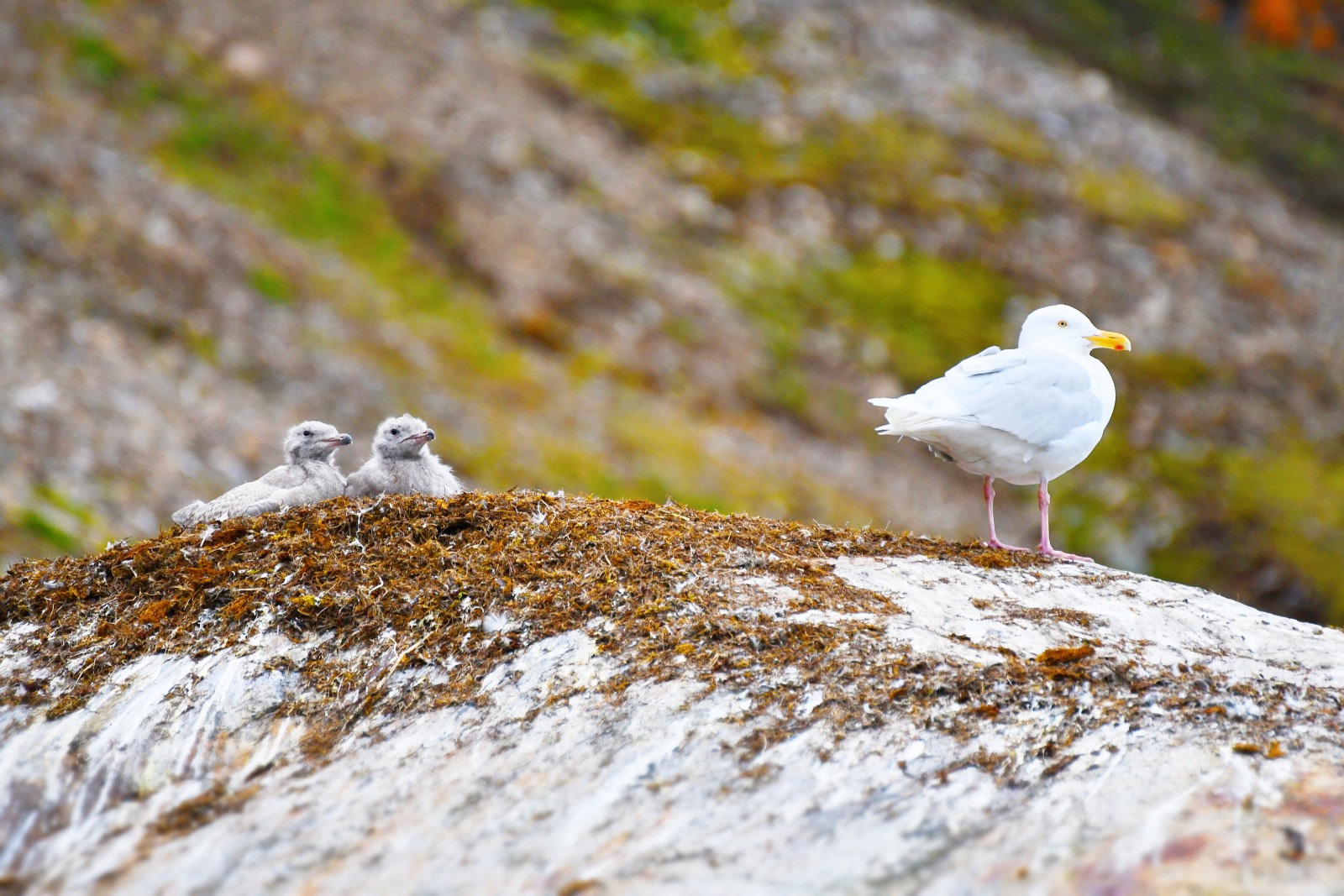Name: Glaucous Gull (Larus hyperboreus)
Length: 70 centimetres
Weight: 1 to 1.5 kg
Location: North American and Northwest European Arctic coastlands in summer; as far south as Mexico in winter
Conservation status: Least Concern
Diet: Invertebrates, fish, eggs, chicks of other species, small birds and mammals, carrion, garbage
Appearance: White head, belly, and wingtips; grey back; yellow bill with red spot
How do Glaucous Gulls feed?
Glaucous Gulls are predatory, raiding nesting colonies for eggs and chicks. They often follow foxes or humans to exploit disturbances. In water, they snatch food from just below the surface and may steal from other birds.
Are Glaucous Gulls social?
They form colonies during mating season but may nest alone. Outside mating season, they sometimes join flocks of other gull species.

How fast do Glaucous Gulls move?
Glaucous Gulls can reach speeds up to 65 km per hour.
What are Glaucous Gull birthing rituals like?
They reach sexual maturity around 4 years of age. They nest in Arctic coastlands or cliff edges, with both parents building nests in small depressions. They lay 1 to 3 eggs per clutch, incubating them for about a month. Both parents feed the chicks, which fledge at about a month and a half.
How long do Glaucous Gulls live?
They generally live about 15 years in the wild, with some in North America living over 20 years.

How many Glaucous Gulls are there today?
The global population is estimated at over 2,000,000.
Do Glaucous Gulls have any natural predators?
Due to their size, their main predator is the Bald Eagle. Chicks and eggs are vulnerable to birds like Crows, Ravens, Skuas, and mammals like Foxes.
7 Grand Glaucous Gull Facts
- Groups of gulls have various names, including "screech," "scavenging," "squabble," and "gullery."
- They are the only large gulls found in the highest Arctic regions.
- Glaucous Gulls on Coats Island in Canada are 15% heavier than other populations.
- The largest Glaucous Gulls rival the largest Great Black-backed Gulls.
- "Glaucous" comes from Latin, meaning "blue-grey or green."
- There are four subspecies: L. h. leucretes (northern Canada to Iceland and Greenland), L. h. pallidissimus (north-west Siberia to the Bering Sea), L. h. barrovianus (north-west Canada to Alaska), and L. h. hyperboreus (north-west Europe to Siberia).
- Younger Glaucous Gulls tend to winter further south than adults.





